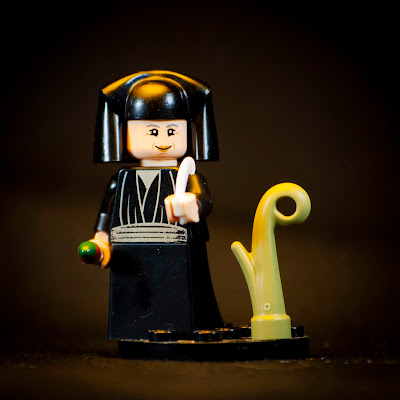St. Casilda of Toledo
St. Casilda was a Muslim princess who later converted to Christianity. One way that she stands out from many other convert saints, is that her life was characterized by charity and miracles even before her conversion.
Casilda was a princess, the daughter of the king of Toledo in Spain. When she was young, Casilda’s mother died of a blood-related illness. Her parents, and Casilda herself when she was young, was Muslim. Despite their religious differences, young Casilda liked to visit the Christian prisoners and was known for showing them exceptional kindness. She often smuggled bread and meat in to feed the prisoners, hidden in her skirt.
One time when Casilda was on her way to feed the prisoners, the guard saw her and stopped her. He had noticed the shape in the folds of her clothing and he demanded for her to show him what she was hiding. Casilda was nervous, but opened the improvised pouch nonetheless. To her surprise, instead of bread, only roses were there and she was allowed to continue her mission. From then on, any time she was nearly caught, only flowers were seen. But when she arrived to feed the prisoners, they were food again.
Eventually, when Casilda was a young woman, she became very ill, bleeding uncontrollably for many days of the same illness that took her mother. The loss of blood sapped her strength and made Casilda frail and weak. Though her father had all the best doctors look at her, none could figure out the cause of her blood loss.
However, Casilda had heard of a holy pool in a town not far away from her visits with the Christian prisoners. The only problem was, that town was under a Christian king, and he probably wouldn’t let a Muslim princess come to the holy well there! But Casilda told her father about the waters, and he was desperate to save his daughter from her condition before it killed her like it had killed his wife. He negotiated with the Christian king, and they came to an agreement: Casilda could come use the holy waters, but in exchange her father had to release all his Christian prisoners.
When Casilda got to the shrine of San Vicente, she drank of the waters and immediately her bleeding was healed. She knew now that the faith that the Christians who had told her of this spring, and whose land it was on, and whose saint it was named for worshiped the true faith, and she was baptized in that same town.
Casilda lived the rest of her life by the miraculous waters in penance and solitude, becoming a hermit. She lived to be 100 years old, never leaving the spring – or the faith – that healed her.
Casilda’s story is marked by a peaceful and caring cooperation between two faiths at odds with each other. Through her kind ways, both as a Muslim and as a Christian, she brought freedom to prisoners, shared understanding between kings of rival religions, and healing to many who learned her story.






